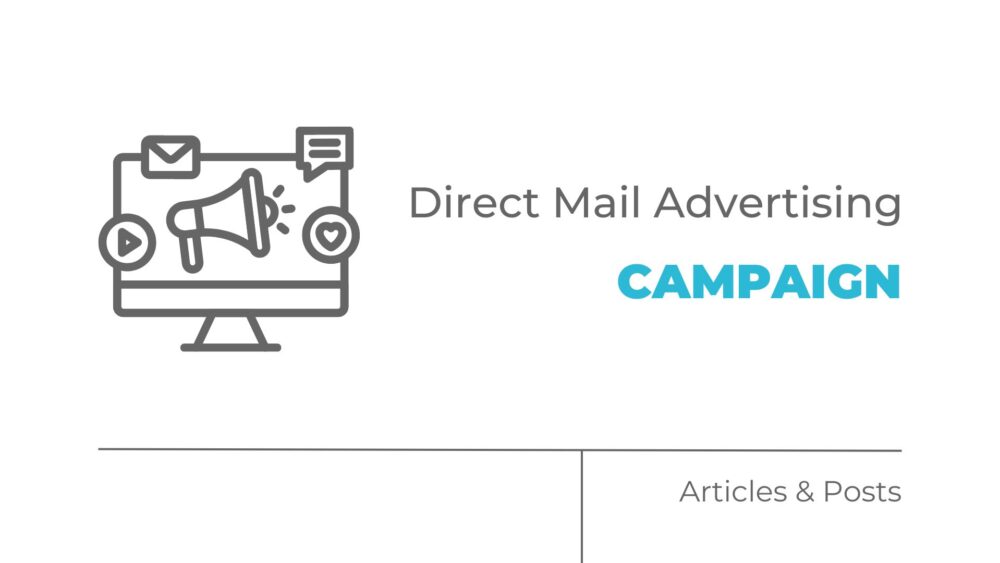Planning a direct mail campaign might sound overwhelming, but it doesn’t have to be.
Think of it as a chance to get creative and connect with your audience in a tangible way.
Whether you want to boost brand awareness, drive sales, or promote a new product, a well-thought-out direct mail campaign can make a big impact.
Let’s dive into the steps you need to take to get your campaign off the ground and see some real results.
How Do You Plan a Direct Mail Campaign?
Planning a direct mail campaign involves several key steps to set yourself up for the most success possible.
Here’s a comprehensive guide to help you get started.
Define Your Objectives
The first step in planning a direct mail advertising campaign is to define your objectives.
What do you hope to achieve?
Whether it’s increasing brand awareness, driving sales, or promoting a new product, having clear goals will guide the rest of your campaign planning.
Identify Your Target Audience
Knowing your target audience is an important step, because you are likely to hit what you aim for.
You need to aim for the right people.
Consider demographics, purchasing behavior, and interests.
Segmenting your audience allows you to tailor your messages, making them more relevant and engaging.
Choose Your Direct Mail Advertising Methods
Selecting the right direct mail advertising methods is essential.
Do you want to use postcards, letters, catalogs, dimensional mailers, or something else?
Each method has its strengths and can be chosen based on your objectives and budget.
Create Compelling Content
Your content should be clear, concise, and compelling.
Use a strong call to action (CTA) to encourage recipients to take the desired action – but be friendly about it at the samee time.
Personalize the content as much as possible to increase engagement.
Design Eye-Catching Mailers
An attractive design can make your mailer stand out.
Use high-quality images, bold headlines, and professional layouts.
Make sure that your branding is consistent throughout the mailer.
Plan Your Distribution
How are you doing to make this happen?
Decide on the distribution method and timing for your campaign.
Consider factors such as peak business periods, holidays, and seasonal trends.
Partnering with a reliable direct mailing service can help you get a timely and accurate delivery.
What Are the Costs Associated with Direct Mail Campaigns?
Understanding the costs associated with a direct mail campaign is essential for budgeting and maximizing ROI.
Here are the primary cost factors to consider:
Design and Copywriting
Creating compelling content and professional designs may require hiring copywriters and graphic designers.
Investing in quality design and content can significantly impact the effectiveness of your campaign.
Printing
Printing costs vary depending on the type of mailer, paper quality, and quantity.
Bulk printing can reduce per-unit costs, but it’s important to balance quality with budget constraints.
Mailing Lists
Purchasing or renting a targeted mailing list can be a significant expense.
Always choose a reputable list provider to get accurate and relevant data.
Postage
Postage is a major cost factor in direct mail campaigns.
Costs depend on the size and weight of your mailers, as well as the mailing class you choose.
Consider using bulk mail rates to save on postage.
Distribution
If you’re using a direct mailing service, there will be additional costs for distribution.
These services can handle the logistics of mailing, so that your campaign is delivered efficiently.
How much you want to do yourself or pay for is up to you, based on your business’s needs.
Tracking and Analysis
If you don’t track it, you’ll never really know if it worked well.
Investing in tracking tools and analytics can help measure the success of your campaign.
This includes costs for software or services that provide insights into response rates and ROI.
How Do You Track the Success of a Direct Mail Campaign?
We mentioned tracking, and you know it’s important.
But how are you going to do it?
Here are some effective ways to track your results:
Unique Tracking Codes
Use unique tracking codes, such as personalized URLs (PURLs) or QR codes, on your mailers.
These codes allow you to monitor who is responding to your campaign and which mailers are driving the most engagement.
Call Tracking
If your campaign includes a phone call CTA, use dedicated phone numbers to track responses.
Call tracking software can provide insights into call volume, duration, and conversion rates.
Response Rates
Measure the response rate by tracking the number of recipients who take the desired action, such as visiting your website, making a purchase, or signing up for a service.
Comparing the response rate to your initial goals helps evaluate the campaign’s effectiveness.
Return on Investment (ROI)
Calculate the ROI by comparing the campaign’s total cost to the revenue generated from it.
This metric provides a clear picture of the campaign’s profitability and helps justify future investments in direct mail advertising methods.
Customer Feedback
Collecting feedback from customers can provide valuable insights into what worked and what didn’t.
Surveys, reviews, and direct communication with customers can help refine your approach for future campaigns.
At the End of the Day
A direct mail advertising campaign can be a game-changer for your business.
By choosing the right direct mail advertising methods, setting clear objectives, and understanding the costs involved, you can create campaigns that truly resonate with your audience.
Tracking your campaign’s success will help you learn and improve with each effort.
With careful planning and execution, direct mail can drive real results and help you build stronger customer relationships.


Comments are closed.